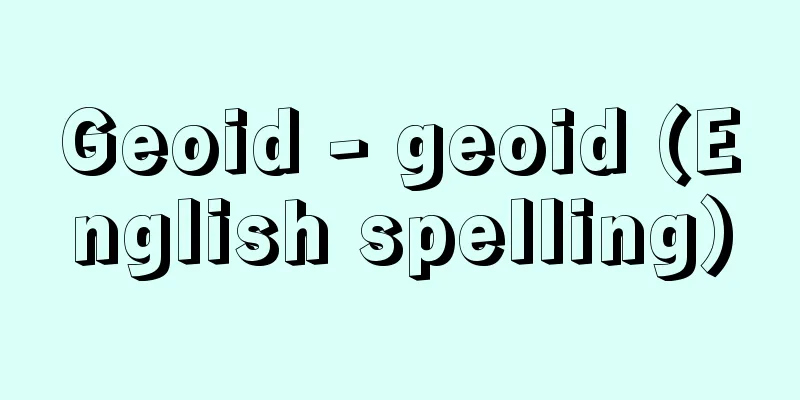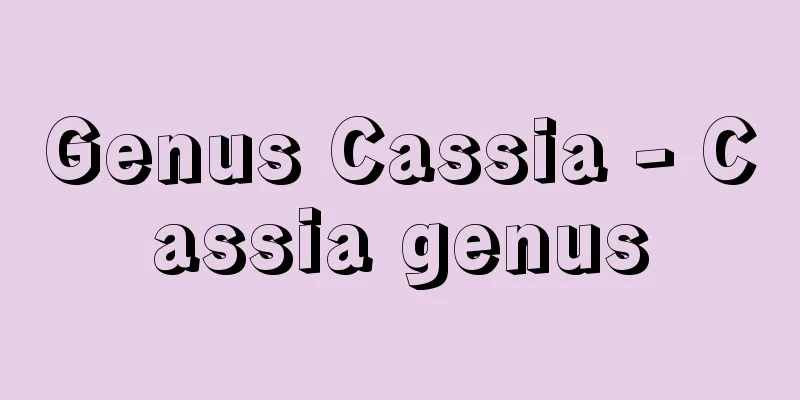Advertising - koukoku (English spelling)

|
Advertising is a paid communication activity conducted by advertisers through advertising media such as newspapers and broadcasting, with the aim of influencing the attitudes and behavior of consumers. For consumers, it can therefore be said to be a social information source that allows them to selectively receive product information, lifestyle information, and so on. Advertising differs from other forms of communication in the following ways: (1) Advertising serves a commercial purpose, which should be to achieve corporate goals and benefit consumers. From a macro perspective, it can be said to be for the purpose of increasing social and economic welfare. (2) The recipients of advertising are the selected majority. Therefore, advertising media is always necessary as a means of communication. (3) The message conveyed in an advertisement is limited to products or services (both tangible and intangible) aimed at achieving commercial objectives, or the advertiser's philosophy or ideas. (4) Because the sender of an advertisement bears a social responsibility, the name of the advertiser must be clearly stated and the costs of advertising must be borne by the advertiser. Publicity is a word that is easily confused with advertising. It refers to the independent reporting and publication of the advertiser's products, services, and ideas by media such as newspapers, magazines, and broadcasting. The advertiser does not have to pay for the time or space. Therefore, publicity is not considered advertising, but a part of PR (public relations) or sales promotion. PR is often used as a synonym for advertising, but originally it meant continuous dialogue activities for individuals and organizations to build and maintain good relationships with the public for their survival and prosperity, and it is a higher concept than advertising. It is also a word that is easily confused with the concept of public relations. Public relations was originally an announcement activity by local governments or organizations with a public nature to make public affairs and projects. Nowadays, it refers to announcement activities that do not include advertising conducted by organizations in general, regardless of whether they are for profit or non-profit. However, as advertising media become more diverse, it is inevitable that public relations and advertising are becoming closer in function and becoming unclear. Furthermore, with the spread of marketing, the term sales promotion has appeared. This refers to activities such as personal selling, displays other than advertising and publicity, events, exhibitions, demonstrations, etc., which are intended to stimulate consumer purchases and retailers' sales efforts; however, in recent years, these activities have been combined with advertising activities, making the distinction difficult. [Shimamori Mitsuo] historyThe Japanese term kokoku is, of course, a translation of advertisement or advertising, but before this terminology became established around 1882 (Meiji 15), terms such as hikifuda, hojo, kokujo, kokuhoku, kouchi, koukoku, hirome, nisarashi, koujou, and rinkoku were used. Similarly, before advertisement took root in Europe around 1660, words such as address, intelligence, announcement, information, encounter, advice, and publicity were used to describe advertising in each era. Both F. Presbury, author of The History and Development of Advertising (1968), and H. Sampson, author of The History of Advertising (1974), claim that the world's oldest advertisements can be found in papyrus documents excavated in Thebes. The world's first handwritten flyer is said to have been found in front of a Roman bookstore. It is also generally accepted that the oldest printed flyer is an advertisement for a religious book called Salisbury's Pie (1477), printed by Caxton. In 1625, newsbooks, the predecessors of newspapers in England, began to carry advertisements, and newspaper advertisements appeared in the early 18th century. On the other hand, the origin of broadcast commercials is the human voice, which originates from Greek criers. Just as the Greeks sought beauty and perfection in art, they chose people with beautiful voices and skillful intonations as their messengers, and even went so far as to have musicians accompany them to correct any flaws in their speech. In this way, media has not changed from the past to the present in that it has evolved from a mere means to a more functional one through the addition of ingenuity. The origin of Japanese advertising has been widely believed to be based on the "Kanshiryo" (Regulations on the Seki City) in volume 9 of the "Ryo no Gige" (833) of the Yoro Code, which stipulated the East and West City systems, but in recent years criticism of this theory has been raised (Takakuwa Suehide, "The Roots of Advertising," 1981). Signs and woodblock-printed flyers called "hikifuda" are representative of advertising from the Genroku period (1688-1704) to the early Meiji period. In particular, hikifuda, written by famous comic writers (such as Santo Kyoden) and artists, who are the forerunners of today's copywriters, played a major role. For advertising to be socially accepted, the emergence of people who created it is necessary. In England, this was John Houghton, the "father of advertising," in France, T. Renaud, the "pioneer of modern advertising," and P. T. Barnum, the "king of mass media" in America. In Japan, we cannot leave out Fukuzawa Yukichi. His "Message to the Merchants" (1893) is a modern advertising theory that includes Fukuzawa's criticism of advertising tags. In it, he points out the shortcomings of advertising tags, such as their small distribution area, emotional copy, and their ephemeral nature, and is the first to explain the nature of advertising in the age of mass media, using newspaper advertisements, which have large circulations, practical text, and repetitive nature, as an example. Thus, about 200 years later than Europe and America, Japanese advertising finally became incorporated into society as a unique capitalist system. Initially, print and outdoor media dominated advertising, but radio advertising as a broadcasting medium appeared in various countries in the 1920s, and television was added in the 1950s. On the other hand, sales promotion (SP) advertising, including various events to improve the company's image, also increased rapidly, and currently, media mix methods that use mass media advertising in conjunction with sales promotion are being actively researched. As advertising progresses, complaints about advertising also increase. In the United States, Printer's Ink magazine established a code of conduct as early as 1911, and the National Advertising Review Board (NARB) was established in 1971. The Japan Advertising Review Organization (JARO), an incorporated association established in 1974 (Showa 49), followed this model. [Shimamori Mitsuo] functionIn The Economic Implications of Advertising (1969), American advertising scholar O. J. Firestone lists 43 advantages and 33 disadvantages of advertising, categorizing them into economic, social, corporate, and marketing categories. Using these as a reference, the social, economic, and cultural functions of advertising can be listed as follows. First, the social functions of advertising include information transmission and persuasion. Not only does it allow consumers to obtain product and lifestyle information and broaden the range of product choices, but it also makes them interested in the new lifestyles introduced through the advertisements, as the "meaning" of the products is emphasized in the advertisements. On the other hand, this appeals to consumers' desires and leads them to make unnecessary purchases, so it is not without criticism that it emphasizes materialism. Secondly, advertising provides new culture, entertainment, and topics, and contributes to the maintenance and development of the business of newspapers, broadcasting, and other media companies, ultimately allowing readers and viewers to obtain information at a lower price. However, at the same time, it cannot be denied that it promotes the standardization of consumption patterns and the vulgarization of culture through the mass media, and promotes the commercialization and popularity of media. The economic functions of advertising can be considered from both macro and micro perspectives. First, as a macro national economic function, most economists do not deny the fact that advertising contributes to mass sales and mass consumption, expanding total effective demand, and raising income and employment levels. Furthermore, it can be said that an advanced mass consumption society was only possible thanks to the credit-creating effect of advertising. In response to this, there are still counterarguments that advertising does not have a demand-creating effect, and that it instead promotes the process of economic concentration and creates barriers to market entry for new manufacturers. On the other hand, as a micro managerial economic function, advertising reduces distribution costs, thereby lowering sales costs, preventing price competition and enabling advance sales. Furthermore, it is argued that advertising helps improve a company's image, and that with the cooperation of distributors who handle the advertiser's products, it is possible to lower prices. In response to this, there is a persistent counterargument, mainly from consumer groups, that advertising as a form of non-price competition actually has an impact on product prices, and that in an oligopoly situation, prices become rigid, and prices are likely to rise but not fall. The cultural function of advertising is as follows. In other words, while advertising is influenced by the culture of the time, it also has a strong impact on culture. For example, not a few modern songs and catchphrases originated from advertisements and commercials, and they also have a major influence on subcultures such as pop art and new fashion, which have commercial art as their major source, as well as on customs and social conditions. Commercials in particular are a source of cultural education for children, whether they like it or not. For this reason, when the amount of advertising exposure becomes noticeable, women's and consumer groups immediately raise the issue of excessive advertising, which has led to discussions in the Diet and elsewhere about taxing advertising expenses. Furthermore, advertising has long been considered incompatible with "freedom of expression" because it is a type of economic activity and a profitable form of expression. However, the Tokyo District Court's ruling in the 1977 case of Sankei Shimbun (now Sankei Shimbun) v. Japanese Communist Party (a dispute over defamation over opinion advertising) made it clear that opinion advertising is guaranteed freedom of expression under Article 21 of the Constitution. However, unlike in the United States, where the scope of application of the constitutional guarantee of freedom of expression is expanding to include other commercial advertising, in Japan many of these issues remain as issues for the future. As mentioned above, modern advertising has many points of contention. When people in the advertising field discuss advertising, they tend to overestimate its power. They tend to think that advertising creates demand, concentrates industry, and misleads consumers. However, all of these things are only possible under three conditions: in a specific culture, with all other conditions remaining constant, and under certain specific circumstances. Discussion based on given conditions such as these will be necessary for the future of advertising research. [Shimamori Mitsuo] Environmental changes since the 1980sAs consumption became more diverse and individualized in the late 1980s, the idea of "dividing the masses" and "smaller masses" came up, and in response, companies came up with strategies of small-lot production of a wide variety of products and market segmentation. Communication specifications also moved from mass to customized, and sales promotion (SP) advertising expenses became more important. Multimedia, centered on the Internet, appeared to take on the functions that mass media had performed in the 1950s, and took on the role of information distribution and direct marketing. Advertisers of this era began to place more emphasis on communication effects that emphasized the position of the consumer, the receiver of information, than on the marketing effects of making products known and purchased through advertising. For example, commercials also shifted to portraying the values of the receiver, rather than the perspective of the sender. Brand equity strategies, which remain important even during economic downturns, are a typical example of this. On the other hand, cultural and sports-related sponsored events, which have become increasingly popular since the 1980s, have not only enhanced a company's corporate image but also brought about significant marketing effects through character business and the like. The advertising agencies that planned these events further accumulated know-how in incorporating non-commercial fields such as corporate museums, local expositions, national athletic meets, and town development, and developed a multifaceted advertising strategy. As a result, the ratio of advertising expenditure to GDP (gross domestic product) increased, but the weight of mass media within advertising expenditure decreased. Entering the 1990s, major liberalization policies in areas such as finance, communications, and transportation led to the privatization of domestic monopoly public utilities, and restrictions on advertising such as comparative advertising, prize offers, and coupon advertising were relaxed, with the relaxation of restrictions on medical advertising also becoming an issue. This liberalization of competition has led to overseas advertisers entering the domestic market. For example, imported advertising in magazines has been increasing while domestic advertising has been shrinking. This is proof that overseas companies are beginning to fully engage in marketing activities in Japan. Meanwhile, prompted by the collapse of the Soviet Union and Eastern Europe in the early 1990s and the integration of the EC market, Japan's advertising industry is also entering an era of big bangs. These include Asahi Tsushinsha, which merged with Daiichi Kikaku, forming a capital alliance with the UK's WPP, Ogilvy & Mather establishing a Japanese subsidiary, and Omnicom, the world's largest advertising group, investing in Japan I&S. These are posing a threat not only to established foreign advertising companies, but also to major domestic advertising companies. For major American advertising companies, overseas advertising accounts for nearly half of their total sales. However, while Japanese advertising companies are sometimes in the top ten in Southeast Asia, they are not doing well in other regions. In order to win the competition with foreign advertising companies that are coming to Japan, domestic advertising companies will be forced to implement aggressive policy reforms such as splitting up into separate companies, developing Internet advertising, and going public. [Shimamori Mitsuo] International ComparisonResearch into international comparisons of advertising is quite recent, but Toshio Yamaki and others have concluded the following based on advertising expenditure data from each country: [1] Advertising activity is closely related to economic levels, and in countries with active economies, the ratio of advertising expenditures to GNP (gross national product) is high. [2] Conditions for the development of advertising include the average life expectancy of the people, weather conditions, type of language sphere, literacy rate, religion, etc. For example, "Protestant countries with an average life expectancy of over 70 years, cold climates, speaking Germanic languages, and literacy rates of over 70%" have the most active advertising activities. [3] Advertising activities are closely related to the utilization of the underlying communication infrastructure (the basis for the distribution of information), that is, the degree of use of postal service, the prevalence of television, the usage of telephones, the prevalence of newspapers, etc. [4] If we divide the use of advertising media into five categories, namely the four mass media and other media, we get: (1) newspapers, (2) magazines, (3) television, (4) radio, (5) newspapers and television combined, (6) newspapers and magazines combined, and (7) other media. [Shimamori Mitsuo] Advertising MediaThe oldest form of advertising was flyers and outdoor advertisements. However, the establishment of mass media is considered essential for the development of mass production mechanisms and the promotion of mass consumption through the transmission of large amounts of information. For mass media to develop, a large number of people are required to purchase the information contained in the media. For this to happen, it is necessary for the existence of an educated public who can read. Today's advertising has become more and more effective thanks to the development of mass media, but the development of direct mail (DM), transportation advertising, and movie advertising is of course a prerequisite for the development of postal services, transportation networks, and movie theaters. In this way, the media that advertisers use to convey advertising messages to the masses is collectively called advertising media. This includes mass media such as newspapers and television, and limited-target media such as magazines and radio, as well as sales promotion (SP) media. In the advertising expenses by media that Dentsu publishes every year, there is an item called new media, but recently the term multimedia has appeared. In many cases, the two terms mean almost the same thing. In other words, it is a collective term for media that realizes complex, highly digitized information and communication services that allow two-way communication and have the three characteristics of (1) interactivity, (2) simultaneity, and (3) diversity of expression. Specifically, it often includes CATV, VTR, videotex, teletext, broadcasting satellite (BS), and communication satellite (CS), which emerged based on analog technology during the new media boom of the 1980s, as well as various cybermedia (digital media using personal computers) that emerged in the 1990s. As for so-called "new media advertising expenditures," they have shown double-digit growth for four consecutive years since 1995, and are expected to continue to increase rapidly in the future. [Shimamori Mitsuo] newspaperIn Japan, five national newspapers based in Tokyo with over one million copies in circulation account for about half of the total circulation in the country. This is different from the situation in Europe and the United States, where newspapers have small circulations and a wide variety of newspapers that focus on local information. As an advertising medium, it is the strongest of all mass media in terms of not only the function of transmitting information, but also the detail and reliability. Since it has an outstanding persuasive function and is a medium that readers actively choose of their own volition, advertisements are selected and read carefully by readers. Unlike foreign newspapers that only publish morning or evening editions, many Japanese newspapers are published twice a year, in the morning and evening, so their life as a medium is short, lasting only until the next issue, and they are affected by other advertisements published on the same page, but they are a print medium that is suitable for record keeping. Recently, multi-color offset printing has become more common, but generally they are monochrome and black. Although they require readers to be somewhat proactive, they are easy to remember if they are read. [Shimamori Mitsuo] magazineIn the United States, weekly magazines with circulations of several million copies play a role equivalent to that of Japanese national newspapers, but in Japan, only a few weekly and monthly magazines, combined, exceed one million copies. Magazines have a life as a medium until the next issue arrives, and they are often circulated within the home, so eye-catching advertisements may be seen many times. Class media is a class media that segments the market by gender and age, from children to the elderly, but the total number of issues and circulations combined is one of the largest in the world. Compared to newspapers, the cost per page is cheaper, so it is easy to advertise on full pages or multiple ads (advertisements by one advertiser that span several pages), and the vivid multi-color printing makes it visually appealing. In general, each magazine has a clear target audience, so it is highly effective at persuading and appealing, but in order to prevent magazines from being overlooked due to the large number of pages, they actively work with editors to create advertisement pages that are readable. [Shimamori Mitsuo] radioIn Japan, radio broadcasting, like television broadcasting, is a two-track system consisting of public broadcasting (NHK), which is funded by reception fees, and commercial broadcasting, which relies on advertising fees. There are three types of commercial broadcasting: AM (medium wave), FM, and shortwave. In recent years, AM stereo broadcasting and "visible radio" using FM waves appeared in the 1990s, and in October 2003, a test broadcast of digital radio (terrestrial digital audio broadcasting) was started. Radio was originally a personal medium that could be used in conjunction with other activities, so the "multitasking" form of listening while driving a car, studying for exams, doing housework, etc. became customary. Because it is a passive medium that can amplify images with sound and music, there is a tendency to attract attention by repeating spots, etc. Advertising fees are low, but the sound fades away quickly, so background sound effects appeal to the listener's emotions and create a sense of unity with the advertised product. Program sponsorship is a method of attracting listeners by adding "shows" that are not directly related to the product. However, the same material may be perceived as either good or bad depending on the listener's subjective taste. Therefore, in the emotionally-oriented radio medium, a method is being considered in which listeners can participate in creating commercials as well as program content. [Shimamori Mitsuo] tv setTelevision here refers to terrestrial television, and CATV, BS, and CS broadcasting are included in the multimedia described below. The term terrestrial comes from the fact that the broadcasting system transmits broadcasting radio waves from transmitters such as Tokyo Tower along the ground to the antennas in each home. In Japan, the household penetration rate of color television is close to 100%, and television broadcasting hours are long, 24 hours, on par with the United States. NHK's Lifestyle Survey shows that viewership hours are more than three hours, which is rare in developed countries. As a result, there has been a growing demand for ratings to be based on individuals rather than the traditional household unit, and mechanical individual viewership ratings surveys have been conducted since 1994. Television can make an impressive appeal through audiovisuals, and since it is colorful and adds movement, it is extremely effective in promoting awareness and demonstrating various products. The spread of remote controls has led to the emergence of the style of ``zapping viewing'' (changing channels one after another when commercials are on), which is a negative factor in its effectiveness as a medium, but on the other hand, it has become possible to record and store programs by scheduling them. Also, because many people receive the same message at the same time, buzzwords and image songs can increase the buzz and word-of-mouth effects can be expected. Furthermore, there is an image that only famous brands can use television to create a nationwide network, which also creates trust in the sponsoring advertisers. However, with the advent of multimedia, when satellite digital broadcasting is added in the future and terrestrial television begins to compete for viewing time, the content will become important. [Shimamori Mitsuo] Sales Promotion (SP)There are many types of media, including outdoor, events, transportation, inserts, direct mail, POP, posters, catalogs, and movies. All of these are "house media" in which the media itself is advertising material, and are different from mass media such as newspapers and television, and limited-target media such as magazines and radio. Furthermore, while newspapers, television, magazines, and radio are primarily informative, they have a strong sales-level function that cannot be repeated. Therefore, they have been treated as complementary media until now. However, advertising ultimately aims to make people buy, and in today's world where targeted advertising activities have become important, companies need to carry out SP activities in close cooperation with distribution and sales organizations. SP media require more effort than mass media, and are not necessarily efficient. However, they act as a direct bridge between retailers and consumers, attracting attention outside with outdoor and transportation advertising, inviting people inside with inserts and direct mail, or making it a topic of conversation at events, and encouraging impulse purchases with POP, which is called point-of-purchase advertising. [Shimamori Mitsuo] MultimediaA general definition is that it is a medium that combines the six media elements of text, figures, graphs, audio, images, and video in the most suitable format according to the content and purpose of communication, integrates the information through digital technology, and realizes two-way communication. Representative examples include CATV, BS, CS, PCM audio broadcasting, data broadcasting, and cyber media (Internet, commercial lines, VOD, CD-ROM, CD extra, DVD). As the United States made clear in its 1992 "Information Superhighway Initiative," the potential of multimedia is great, but in the end, it is a tool for communication. What new services will be created using it remains to be seen. Services that are expected to become explosively popular in the near future include e-commerce (electronic commerce), online shopping (mail order sales), and cyber malls (virtual shopping malls). In the future, as the Internet and commercial online services become broadband, online media advertising and banner (headline) advertising on websites operated by mass media will increase. These are interactive and measurable media, and are characterized by response advertising (advertising that directly elicits a response from the target) that is directly linked to sales. In that respect, it can be said that these media are different from existing media. [Shimamori Mitsuo] Advertising regulationsAdvertising regulations are a general term for laws, orders, and ordinances that aim to regulate certain advertising activities with the primary aim of ensuring fair competition and protecting consumers. Not only do they prohibit false, exaggerated, and illegal advertising, but they also restrict the location and method of advertising, require the display of specific information, and sometimes even impose penalties. Many regulations and laws were abolished after the end of World War II, including the Police Offenders Punishment Order (1908) and the Advertising Control Law (1911) that were related to advertising. These two prewar laws were public security legislation intended to regulate ideological expression during the development of Japanese capitalism, on the one hand to strengthen business regulations, and on the other hand to maintain peace and order and good morals by cracking down on bad advertising. The former of these listed exaggerated and false advertising, posters, and forced publishing as targets of regulation. The Minor Offenses Law (Law No. 39 of 1948), which succeeded this law after the Second World War, also regulates the posting of notices indiscriminately and deceptive or misleading advertisements. The latter was the only law that targeted only advertisements, regulating them as "objects" from the perspective of outdoor beauty and safety. This too has been carried over almost unchanged to the Outdoor Advertising Law (Law No. 189 of 1949). The Outdoor Advertising Law leaves specific regulations to prefectural ordinances. The ordinances widely adopt a system of permission from the governor, and in most cases, a permission procedure is required to display outdoor advertisements. [Shimamori Mitsuo] Prohibition of Unfair Competitionになったんです。 English: The first thing you can do is to find the best one to do. This Landscape Law was greatly relaxed in April 1996 (Heisei 8) in response to strong requests from both domestic and international perspectives. In addition, for individual industries, there is a "Fair Competition Code" for labeling and prizes certified by the Fair Trade Commission, with respect to industry regulations. As of January 1999, 117 items have been created, with 68 marks and 49 marks for prizes, allowing violators to be issued. [Shimamori Mitsuo] Medical and Pharmaceutical Affairs LawBy around 1960, various other regulations regarding advertising had been created, such as the Food Sanitation Act (Act No. 233 of 1947), the Securities and Exchange Act (currently the Financial Instruments and Exchange Act, Act No. 25 of 1948), the Medical Care Act (Act No. 205 of 1948), and the Pharmaceutical Affairs Act (Act No. 145 of 1960). Based on the Pharmaceutical Affairs Act, which prohibits false and exaggerated advertisements regarding drugs, quasi-drugs, medical equipment and cosmetics, the Ministry of Health, Labor and Welfare (currently the Ministry of Health, Labor and Welfare) had since established a "Appropriate Advertising Standard" and began providing detailed guidance and enforcement, which led to the contents of pharmaceutical advertising being purged. The Medical Act also restricts advertising on medical and other businesses, but a series of deregulation policies will allow more than purely announced advertising in the future. In addition, in 1950, the Radio Law (Act No. 131 of 1950) and the Broadcasting Law (Act No. 132 of 1950), and commercial broadcasting began the following year based on this. These laws include provisions relating to advertising broadcasting. [Shimamori Mitsuo] Thorough consumer protectionIn addition, there are the Industrial Standardization Act (Act No. 185 of 1949) and the Real Estate Transaction Business Act (Act No. 176 of 1952), and the Basic Consumer Law (Act No. 78 of 1968; the Basic Consumer Protection Act was renamed in 2004). Regarding the appropriateness of advertising and other displays, the government clearly stipulates that, in order to ensure that consumers do not make mistakes in their choices when purchasing or using products or using services, it shall implement necessary measures such as regulating false or exaggerated advertisements and other displays" (Article 15).になったんです。 English: The first thing you can do However, it is believed that the main cause of the significant easing of the current regulations is external pressure. As a result, the maximum amount of prizes for open prizes has been increased from the previous 1 million yen to 10 million yen, and the maximum amount of closed prizes for joint prizes is 100,000 yen, and the maximum amount of total (sticky) has been eliminated, making it easier for foreign companies to enter the market. [Shimamori Mitsuo] Product Liability and Copyrightになったんです。 English: The first thing you can do is to find the best one to do. In addition, just as copyright laws do not generally recognize copyright in commercial art, there is still no uniform view within the industry regarding whether copyright exists in advertisements and commercials, and, if so, where the copyright belongs. [Shimamori Mitsuo] "Uchikawa Yoshimi, "The History of Japanese Advertising Development" (1980, Dentsu)" ▽ "History of Western Advertising Culture" (1981, Kodansha)" ▽ "Mika Eiji, "Advertising in a Timeline of Japanese Economy" (1995, Koyo Shobo)" ▽ "Kobayashi Tazaburo, "Basics of Advertising I, II" (1996, Nikkei Advertising Institute)" ▽ "Kobayashi Tazaburo, "New Edition New Advertising" (1997, Dentsu)" ▽ "Yamamoto Takeri, "For Those Who Study Modern Advertising Studies" (1998, Sekai Shisosha)" ▽ "Kaneko Hideyuki, "The World's Public Advertising: The World is Full of the Themes of "Public Advertising" (2000, Kenkyusha Publishing)" ▽ "Advertising and Information" (2003, Soseisha)" ▽ "New Advertising Supervised by Shimamura Kazue (2006, Dentsu)" ▽ "Hiroyuki Hata, "Introduction to Practical Practice Introduction to Advertising Illustrated Introduction to Advertising" (2006, Japan Management Association Management Center)" ▽ "Knowledge of Advertising Laws" by Okada Yonezo and Yanase Kazuo (Nikkei Bunko)" [Reference Items] | | | | | | | | | | | | | | | | | |Source: Shogakukan Encyclopedia Nipponica About Encyclopedia Nipponica Information | Legend |
|
送り手である広告主が、受け手である消費者の態度や行動に影響を与える目的で、新聞、放送などの広告媒体(アドバタイジング・メディア)を通じて有料で行う情報伝達活動。したがって受け手である消費者にとっては、商品情報や生活情報などを選択しながら受け取ることができる社会情報源ともいえる。広告が他のコミュニケーションと異なる点として次のことがあげられる。 (1)広告は商業目的を果たすためのものであり、その目的は企業目標の達成と消費者の利益にかなうべきものである。したがってマクロ的にみれば、社会的・経済的福祉の増大を図るためのものといえる。 (2)広告の受け手は、選択された多数者である。そのためコミュニケーション手段には、かならず広告媒体を必要とする。 (3)広告が伝えるメッセージ内容は、主として商業目的を達成するための商品、サービス(有形、無形を含む)あるいは広告主の哲学、考え方などに限られている。 (4)広告の送り手には、社会的責任が伴うものであるから、広告主名は明示されていなければならない。また広告の費用は広告主が負担する。 広告と混同されやすい語にパブリシティーがある。これは、媒体である新聞、雑誌、放送などが、自主的な立場から広告主の商品、サービス、アイデアを取材し発表することをいう。この際広告主は、タイムやスペースの料金を支払う必要がない。したがってパブリシティーは広告ではなく、PR(パブリック・リレーションズ)あるいは販売促進(セールス・プロモーション)の一環として考えられている。PRも、広告と同義語として用いられる例が多いが、本来的には、個人や組織体がその生存、繁栄のため、公衆との間に良好な関係を築き、維持するための継続的な対話活動を意味しており、広告の上位概念にあたる。さらに広報という概念が混同されやすいことばとしてある。広報は、もともと自治体あるいは公共的性格の団体などが行政や事業を周知させる告知活動であった。現在では営利・非営利を問わず、組織体一般が行う広告を含めない告知活動をさしている。しかし、広告媒体が多様になるにしたがって、機能面では広報と広告とが接近して不分明になりつつあることは避けられない。さらに、マーケティングの普及とともに販売促進ということばが登場してきた。これは、消費者の購買や販売業者の販売努力を刺激するための人的販売、広告およびパブリシティー以外の陳列、催事(さいじ)(イベント)、展示会、実演などの活動をいうが、最近では広告活動と一体となって実施されるので、区別が困難になってきている。 [島守光雄] 歴史日本語の広告という用語は、いうまでもなくadvertisementあるいはadvertisingの訳語であるが、この専門語が1882年(明治15)ごろに定着するまでは、引札(ひきふだ)、報条、告条、告白、報告、告知、弘告、弘(ひろ)め、知らせ、口上、稟告(りんこく)などが使われた。同様に1660年ごろにヨーロッパでadvertisementが根づくまでに、アドレス、インテリジェンス、アナウンス、インフォメーション、エンカウンター、アドバイス、パブリシティーなどのことばで、それぞれの時代における広告が説明されている。 世界最古の広告は、『広告の歴史と発達』(1968)の著者F・プレスベリーと、『広告の歴史』(1974)の著者H・サンプソンの両者が、テーベで発掘されたパピルス文書のなかにみいだすことができる、としている。また、世界最初の手書きのびらは、ローマ時代の本屋の店先のものといわれる。さらに最古の印刷びらは、カクストンの印刷による『サルズバリーのパイ』(1477)という宗教書の広告とする、というのも定説である。1625年にはイギリスで新聞の前身であるニューズ・ブックが広告を掲載するようになり、18世紀初頭には新聞広告が登場する。一方、放送CMの起源は人間の声であり、それはギリシアの呼び売り商人(クライヤー)に由来する。ギリシア人は美と完璧(かんぺき)を芸術に求めたように、触れ人には美しい声と節回しの巧みな者から選び、音楽家を同道させて口上の悪いところを直すというくふうまで行った。このようにメディアは、単なる手段から機能的に働かせるために創意が加えられて発達していくという点では、昔も今も変わりがない。 日本の広告の起源は、東西両市制度を規定した養老律令(ようろうりつりょう)の『令義解(りょうのぎげ)』(833)巻9の「関市令(かんしりょう)」に根拠を置く説が強かったが、近年これに対し批判的な意見が出されている(高桑末秀著『広告のルーツ』1981)。元禄(げんろく)年間(1688~1704)から明治初期までの広告を代表するものとしては、看板および木版で印刷されたちらし「引札」がある。とくに、今日のコピーライターの先達である有名な戯作者(げさくしゃ)(山東京伝(さんとうきょうでん)など)や画人の手による引札の果たした役割は大きかった。 ところで広告が社会的に認められるようになるためには、広告をつくりあげた人々の登場が必要になってくる。それがイギリスでは「広告の父」ジョン・ホートンであり、フランスの「近代広告の先駆」T・ルノードであり、アメリカの「マスコミ王」P・T・バーナムである。日本では福沢諭吉を逸することはできない。「商人に告ぐる文」(1893)は福沢の引札批判を込めた近代広告論である。彼はこのなかで、配布エリアの狭小、情緒的なコピー、一過性という引札の欠点を指摘して、発行部数が多く、実用的文章で反復性のある新聞広告を例に、マス・メディア時代の広告のあり方を初めて説いている。 こうして日本の広告も欧米に200年ほど遅れて、ようやく資本主義の固有の制度として社会のなかに組み込まれるようになってくる。当初、印刷媒体と屋外媒体が主流を占めていた広告に、電波媒体としてのラジオ広告が各国に登場するのは1920年代、さらにこれにテレビが加わるのは50年代である。しかし他方、イメージアップのための各種イベントを含むセールス・プロモーション(SP)広告も急激に増加しており、現在ではマスコミ広告とセールス・プロモーションとを連携して用いるメディア・ミックス手法が盛んに研究されている。広告の進展に伴って広告に対する苦情も多くなる。アメリカではすでに1911年に『プリンターズ・インク』誌による綱領の制定がみられ、71年に至って全国広告審査ボード(NARB)が設立された。74年(昭和49)に設立された社団法人日本広告審査機構(JARO(ジャロ))は、これを範としている。 [島守光雄] 機能アメリカの広告学者O・J・ファイアストンは『The Economic Implication of Advertising』(1969)のなかで、広告のメリット43項目、デメリット33項目をあげ、それらを経済的、社会的、企業活動、マーケティングの各項目にそれぞれ分類している。これらを参考にして、広告の社会的、経済的および文化的機能をあげてみると次のようになる。まず広告の社会的機能としては情報伝達と説得機能とがある。これによって消費者は商品情報や生活情報を得て、商品選択の範囲を広げることができるだけでなく、広告で商品の「意味づけ」が強調されることによって、広告を通じて紹介された新しい生活様式に関心をもつようになる。逆にこのことは消費者の欲望に訴えて不用な購買に向かわせる面もあるので、物質主義を強調するという非難もないことはない。次に、広告は新しい文化や娯楽、話題を提供するとともに、新聞、放送はじめ各種の媒体社の経営維持と育成に貢献し、結果的に読者や聴視者が、より安い値段で情報を入手できるようにする機能がある。しかし同時に、マスコミなどを通じて消費形態の画一化や文化の低俗化現象を促進し、媒体の商業性、大衆性を促していることも否定できない。 広告の経済的機能は、マクロとミクロの両面から考えられる。まずマクロの国民経済的機能としては、大量販売と大量消費に貢献して総有効需要の拡大、所得と雇用水準の上昇に寄与している事実は、経済学者の多くは否定していない。さらに高度な大衆消費社会は、広告の信用創造効果によって初めて成立できたといえよう。これに対して、広告には需要創造効果はなく、むしろ経済集中過程を促進し、新規メーカーの市場参入に障壁を築く働きのほうが大きいとの反論が依然として存在する。一方、ミクロの経営的経済機能としては、広告の流通費削減効果によって販売コストが低下し、価格競争を防止し、事前販売を可能にすることができる。さらに企業のイメージアップに役だつことから、広告主の商品を扱う流通業者の協力を得て、価格を下げうると主張されている。これに対しては消費者団体を中心に、非価格競争としての広告は、むしろ商品価格に跳ね返り、かつ寡占状態のなかでは価格が硬直化して、価格は上がることはあっても下がることは考えられないという根強い反論がある。 広告の文化的機能としては次のような現象がある。つまり、広告はその時代の文化の影響下にある反面、文化に与えるインパクトも強いという点である。たとえば現代の歌や流行語のなかには広告やCMに端を発するものが少なからずあるほか、商業美術を有力な源泉とするポップ・アートやニュー・ファッション、さらには風俗、世相など、サブカルチャー(下位文化)にも大きく作用している。とくにCMは、子供たちにとって好むと好まざるとにかかわらず一つの文化的教養の糧(かて)となっている。それだけに、広告露出量が目だつようになると、婦人・消費者団体などから広告過剰論がただちに提起され、これが、国会その他からの広告費課税論議を惹起(じゃっき)する原因ともなっている。 また広告は、以前から、経済的行為の一種としての営利的な表現行為であるから「表現の自由」にはなじまないとされていた。しかし、1977年(昭和52)の「サンケイ新聞(現産経新聞)対日本共産党事件」(意見広告をめぐる名誉毀損(きそん)の紛争)での東京地方裁判所の判決は、意見広告に関しては憲法第21条の表現の自由の保障を受けることを明確にした。しかし憲法上の表現の自由に対する保障が、その他の商業広告においても適用範囲が広がりつつあるアメリカとは異なって、日本では多くが今後の問題として残されている。 現代の広告は以上のように多くの論争点をもっている。広告を広告周辺の人々が論議するときは、広告の力を過大に評価しがちである。広告があれば需要が創造できたり、産業が集中したり、消費者は間違って誘導されたりする、とみがちである。しかし、それはいずれも、固有の風土のなかで、他の条件が一定として、ある特定の下で、という三つの条件のなかにおいて実現するにすぎない。このように与件付きの論議こそが広告研究の今後には必要であろう。 [島守光雄] 1980年代以降の環境変化1980年代後半からの消費の多様化、個性化の進展とともに「分衆論」「小衆論」が論じられ、それに呼応する形で、企業側からも多品種少量生産や市場細分化の戦略が打ち出された。コミュニケーションの仕様もマスからカスタム化へ向かい、セールス・プロモーション(SP)広告費が重みを増してくる。かつて1950年代にマス・メディアが成し遂げた機能にかわるかのようにインターネットを中心とするマルチメディアが情報流通やダイレクト・マーケティングを担うべく登場してくる。 この時代の広告主は、広告を通じて商品が認知され、購買されるというマーケティング効果以上に、情報の受け手である消費者の立場を重視するコミュニケーション効果に比重をかけることになった。たとえばCMも送り手の目でなく、受け手の価値観を描くという方向に転換していく。不況下でも重要視されるブランド・エクィティ戦略はその一典型である。 一方、1980年代からいっそう盛んになった文化やスポーツに関する冠(かんむり)イベント活動は、その企業の企業イメージを高めるだけでなく、キャラクター・ビジネスなどを通じて多大なマーケティング効果をもたらすことになった。 これらを企画した広告会社は、さらに企業博物館、地方博覧会、国民体育大会、町づくりという非商業的分野をも取り込むノウハウを蓄積して、広告関連の多角的戦略を展開する。その結果、GDP(国内総生産)に占める広告費比率は上昇したが、広告費内のマス・メディアの比重は低下した。 1990年代に入ると、金融、通信、交通などの大幅な自由化政策によって国内の独占的な公共事業体が民営化されたほか、比較広告、景品提供、クーポン広告などの広告規制が緩和され、医業広告の緩和も課題となっている。 このような競争の自由化は海外広告主の国内参入を招いた。たとえば雑誌における海外からの輸入広告は、国内広告の縮減をしり目に増加をみせている。これは海外企業の対日マーケティング活動が本格化していることを証明していよう。一方、1990年代初頭のソ連・東欧圏の崩壊、EC市場統合などに触発されて日本の広告業界もビッグバン時代を迎える。第一企画を合併した旭通信社のイギリスのWPPとの資本提携、オグルヴィ・アンド・メーザーの日本法人設立、世界最大の広告会社グループであるアメリカのオムニコムによる、日本I&Sへの出資などである。これらは既成の外資系広告会社だけでなく、国内の大手広告会社への脅威ともなっている。 アメリカの主要な広告会社は、全取扱高の半分近くは海外広告で占める。しかし、日本の広告会社は東南アジアではベストテンに入ることはあるが、その他の地域では全然振るわない。日本に上陸してくる外国の広告会社との競争に打ち勝つために、国内の広告会社は分社化やインターネット広告の開拓、株式公開などの積極的な政策改革を強いられることになろう。 [島守光雄] 国際比較広告の国際比較についての研究は近年のことに属するが、八巻(やまき)俊雄らは各国の広告費データを基に次のように結論づけている。 〔1〕広告活動は経済水準と密接な関係があり、経済活動が活発な国では広告費のGNP(国民総生産)に対する比率は高くなる。 〔2〕広告が発達する条件としては、国民の平均寿命の長さ、気象条件、言語圏の種類、識字率、宗教などが関係する。たとえば「平均寿命が70歳を超え、冷帯で、ゲルマン系の言語を話し、識字率が70%を超える、プロテスタントの国」がもっとも広告活動が活発である。 〔3〕広告活動は、その背景となるコミュニケーション・インフラストラクチャー(情報流通の基盤)の活用、つまり、郵便の利用度、テレビの普及状態、電話の利用状況、新聞の普及状況などと深くかかわっている。 〔4〕広告媒体の利用状況を、マスコミ四媒体とその他媒体の五つのカテゴリーに分けると、(1)新聞型、(2)雑誌型、(3)テレビ型、(4)ラジオ型、(5)新聞・テレビ併用型、(6)新聞・雑誌併用型、(7)その他媒体型、となる。 [島守光雄] 広告媒体広告のもっとも古い形は、ちらしや屋外広告であった。しかし大量生産機構が発達し、大量の情報伝達によって大量消費を促すためには、マスコミの成立が不可欠とされる。マスコミが発達するためには、マスコミに盛られた情報を買い求める多くの大衆が前提となる。そのためには、文字の読める教育を受けた大衆が存在することが必要である。今日の広告はマスコミの発達によって、ますますその効果を発揮してきたが、このほかダイレクト・メール(DM)、交通広告あるいは映画広告が発達するためには、いうまでもなく郵便、交通網の発達や映画館の存在が前提となる。このように広告主が、大衆に広告メッセージを伝達するために用いる媒介的手段を総称して広告媒体という。このなかには新聞・テレビのマス媒体、雑誌・ラジオの限定対象媒体のほかに、セールス・プロモーション(SP)媒体がある。電通が毎年発表している媒体別広告費のなかにニューメディアという項目があるが、最近ではマルチメディアという用語が現れてきた。両者はほとんど同じことをいっている場合が多い。つまり、双方向のやりとりができる複合的で高度にデジタル化された情報通信サービスを実現する媒体で、(1)インタラクティブ(双方向)性、(2)同時性、(3)表現の多様性という三つの特徴を備えているものを総称していう。具体的には1980年代のニューメディア・ブーム期に、アナログ技術を基盤に登場したCATV、VTR、ビデオテックス、テレテキスト、放送衛星(BS)、通信衛星(CS)に加えて、1990年代に名乗りをあげた各種のサイバーメディア(パソコンを使用したデジタル媒体)を含めている場合が多い。 いわゆる「ニューメディア広告費」に関していうならば、1995年から4年連続で2桁成長を示しており、今後も急速に増加するものと思われる。 [島守光雄] 新聞日本では東京に本拠がある100万部以上の全国紙5紙で全国総発行部数の約半分を占める。これは欧米のローカル情報を中心とする少部数かつ多彩な新聞事情とは異なる。広告媒体としては、情報伝達の機能だけでなく、詳報性、信頼性などに関してもマスコミ媒体中最強力である。説得機能が卓抜で、自己の意思で積極的に選んだ媒体であるだけに、広告は読者によって選択され、熟読される。朝刊あるいは夕刊しか発行しない外国の新聞社と違って、朝夕2回発行されるセット紙が多いので、媒体としての生命は次の発行までという短命さ、および同じ紙面に同載される他の広告の影響を受けるという難点はあるが、記録保存に適した活字媒体である。最近は多色刷りオフセット紙面も増えたが、一般には黒の単色でじみである。読者に若干の能動性を要求する反面、読んでもらえさえすれば記憶されやすい。 [島守光雄] 雑誌アメリカでは数百万部の部数をもつ週刊誌が、日本の全国紙に相当する役割を担っているが、日本ではようやく100万部を超えるのが週・月刊誌あわせて数誌しかない。雑誌は次の号が到着するまで媒体としての生命があり、家庭内での回読率も高く、目だつ広告は何回も目に触れる可能性がある。子供から老年まで性、年齢ごとに市場を細分化したクラス・メディアclass mediaであるが、合計した総発行点数および総発行部数は世界屈指である。新聞に比べるとページ当り単価が安いので、見開き全ページ広告やマルチプル・アド(数ページにまたがって、1広告主が掲載する広告)が容易であり、しかも鮮明な多色印刷で視覚に訴えることができる。一般に雑誌ごとに対象が明確なので、説得訴求効率が高いが、ページ数が多くて見落とされるのを防ぐため、編集の協力を得て、読ませる広告面づくりが盛んである。 [島守光雄] ラジオ日本ではテレビ放送と同様にラジオ放送においても、受信料を財源とする公共放送(NHK)と広告料依存の商業放送との二本立て制度になっている。この商業放送ではAM(中波)、FM、短波の3種類の放送がある。近年では1990年代にAMステレオ放送やFM波を使った「見えるラジオ」が登場したほか、2003年10月にはデジタルラジオ(地上デジタル音声放送)の実用化試験放送も開始されている。ラジオはもともとパーソナル・メディアpersonal mediaとして他の行為と両立しうるので、自動車運転、受験勉強、台所仕事など、「ながら族」の形態が慣習化された。音声、音楽によりイメージの増幅が可能で受動的な媒体であるため、スポットなどの繰り返しによって注意をひく傾向に流れがちになる。広告料金は安いが、音はすぐ消えるので、バックの効果音などによって聴取者の情緒に訴えてCM商品との一体感を醸し出す。直接的には商品と無縁な「出し物」を添えて聴取者をひきつけるようにしたのが番組提供という方法である。しかし同一の素材が聴取者の主観的味つけによって好悪いずれにも受け取られるおそれがある。したがって、情緒中心のラジオ媒体では、聴取者の参加によって番組内容同様にCMをもつくりあげるという手法が考えられている。 [島守光雄] テレビここでいうテレビは地上波テレビをさし、CATVやBS、CSによる放送は後述のマルチメディアに包括する。地上波とは、その放送の仕組みが東京タワーなどの送信所から地上に沿って、放送電波を各家庭のアンテナまで送信することに由来している。日本においては、カラーテレビの世帯普及率が100%に近く、テレビの放送時間もアメリカと並んで24時間と長い。NHKの生活時間調査では先進各国であまりみられない3時間余の視聴時間が出ている。そこで、視聴率は従来の世帯単位でなく個人単位を要望する声が強まり、1994年から機械式個人視聴率調査が実施されている。テレビは視聴覚を通じて印象的にアピールすることができるうえに動きが加わり、カラフルでもあるので、各種商品の認知や実演効果は絶大である。リモコンの普及によって「ザッピング視聴」(CMなどのときに次々とチャンネルをかえる)のスタイルがでてきたことは媒体としての効果にはマイナスであるが、一方では予約録画が可能になったので記録・保存性をもつようになった。また、多くの人が同時に同じメッセージを受けることから、流行語やイメージ・ソングを通して話題性が高まり、口コミ効果を期待することもできる。さらに、テレビを使って全国的ネットができるのは銘柄企業である、とのイメージがあって、それが提供広告主への信頼感ともなっている。しかし、マルチメディアの登場によって、将来の衛星デジタル放送を加えて地上波テレビが視聴時間を競い合うことになった際は、そのコンテンツ(内容)が重要になろう。 [島守光雄] セールス・プロモーション(SP)媒体としては、屋外、イベント、交通、折込み、DM、POP、ポスター、カタログ、映画と多種にわたる。これらはすべて媒体そのものが広告物である「ハウス・メディア」で、マス媒体としての新聞、テレビや、限定対象媒体としての雑誌、ラジオとは異なる。さらに、新聞、テレビ、雑誌、ラジオがインフォーマティブ(情報・説得的)な機能が主であるのに対して、繰り返しのきかない、セールスレベルでの強力な機能をもっている。したがって、いままではメディアとして補完的に扱われてきた。しかし、広告は最終的には購買を目途としており、ターゲットを絞った広告活動が重要となった今日では、流通販売組織との密接な連携によるSP活動が企業に必要である。SPメディアはマス・メディアに比べ労力を要し、かならずしも効率的ではない。しかし、外では屋外広告や交通広告で注意をひき、内にあっては折込みやDMで招き、あるいはイベントで話題にのせて、購買時点広告といわれるPOPで衝動買いに走らせるなど、販売店と消費者との直接の橋渡しを演じている。 [島守光雄] マルチメディア一般的な定義としては、文字、図形、グラフ、音声、画像、映像の六つのメディア要素を、コミュニケーションの内容や目的に応じて最適な形式に組み合わせ、その情報をデジタル技術によって統合し、双方向のやりとりを実現することのできるメディアである。代表的なものとしてはCATV、BS、CS、PCM音声放送、データ放送、サイバーメディア(インターネット、商用ライン、VOD、CD-ROM、CDエキストラ、DVD)などである。アメリカが1992年の「情報スーパーハイウェー構想」で明らかにしたようにマルチメディアの潜在的可能性は大きいが、つまるところはコミュニケーションの道具である。それを使ってどんなニュー・サービスを生み出すかは今後にかかっている。近い将来、爆発的に普及すると思われるサービスとしてはEコマース(電子商取引electronic commerce)、オンライン・ショッピング(通信販売)、サイバーモール(仮想商店街)などがあげられる。 今後、インターネットや商用オンラインサービスが広帯域化されるとオンライン・メディアの広告やマスメディアなどが運営するホームページでのバナー広告(見出し広告)が増してこよう。これらはInteractive and Measurable、つまり双方向で測定可能なメディアとして、売りに直結したレスポンス広告(直接にターゲットから反応をとる広告)という特徴をもっている。その点で、既存メディアとは一線を画するメディアといってよいであろう。 [島守光雄] 広告法規広告法規は、公正競争の確保と消費者の保護を主眼として、特定の広告活動を規制しようとする法律、命令、条例の総称である。虚偽、誇大、違法な取引の広告を禁ずるのはもちろんのこと、広告の場所や方法の制限、特定事項の表示義務などを規定し、ときには罰則さえ伴うものまである。第二次世界大戦の終了を境に多くの規則法令が廃止されたなかに、広告関係では警察犯処罰令(1908)と広告物取締法(1911)が含まれていた。この戦前の2法は、日本資本主義の発展過程のなかで、一方においては営業規制の強化を企図するとともに、他方においては不良広告の取締りを兼ねて安寧秩序や善良な風俗の維持を図る、という思想表現の規制を意図していた治安立法であった。このうち前者では、取締りの対象として誇大・虚偽広告や貼(は)り紙あるいは掲載強要などをあげていた。第二次世界大戦後この法律を受け継いだ軽犯罪法(昭和23年法律第39号)も、貼り紙をみだりに貼ることや、人を欺いたり誤解を招くような広告は規制することにしている。後者は、広告を屋外の美観、安全の視点から「物」として規制する、広告だけを対象とする唯一の法律であった。これも屋外広告物法(昭和24年法律第189号)にほとんどそのまま受け継がれている。屋外広告物法は、具体的規制を都道府県の条例にゆだねている。条例では知事の許可制が幅広く採用されていて、屋外広告物を掲出しようとすれば、ほとんどの場合、許可手続を必要とする仕組みになっている。 [島守光雄] 不正競争の禁止一方、不正競争を禁止し、あわせて広告の適正化と消費者の保護を図るのが不正競争防止法(昭和9年法律第14号)である。この法律は第二次世界大戦後2回の改正によって、商品の原産地、産出、製造、加工地、商品の品質、内容、製造方法、用途などについての虚偽または誤認表示、および営業誹謗(ひぼう)行為などを規制している。戦後のこの種のもっとも中心的な規制は独禁法(「私的独占の禁止及び公正取引の確保に関する法律」昭和22年法律第54号)の特別法として制定された景表法(「不当景品類及び不当表示防止法」昭和37年法律第134号)である。景表法は、一般の不当広告・表示や過大な景品付き販売を排除するために、簡易に行政的な処理ができる法規制である。また誇大広告や過大景品の取締りを都道府県の各自治体が行えるように、運用権限の一部が委譲されている。この景表法は内外からの強い要請を受けるかたちで、1996年(平成8)4月から大幅に緩和された。このほか個々の業界については、業界規制を尊重したうえで、公正取引委員会が認定した表示と景品に関する「公正競争規約」がある。これは1999年1月現在、表示に関して68、景品に関して49、計117がつくられ、違反者に対して排除命令が出せるようになっている。 [島守光雄] 医療法と薬事法1960年ごろまでには、このほか食品衛生法(昭和22年法律第233号)、証券取引法(現、金融商品取引法、昭和23年法律第25号)、医療法(昭和23年法律第205号)、薬事法(現、医薬品医療機器等法、昭和35年法律第145号)など、広告に関する諸規制が誕生している。この医薬品、医薬部外品、医療用具および化粧品に関して虚偽・誇大な広告を禁じた薬事法に基づいて、厚生省(現、厚生労働省)はその後、「適正広告基準」を設けてきめの細かい指導と取締りにあたるようになったため、医薬品広告の内容が粛正された。医療法では医業などの業務に関する広告制限もしているが、一連の規制緩和政策によって、将来、純粋な告知広告以上のものが認められると思われる。 また、1950年には電波法(昭和25年法律第131号)と放送法(昭和25年法律第132号)が制定され、これに基づいて翌年から商業放送が開始された。これらの法律には広告放送に関する規定が盛り込まれている。 [島守光雄] 消費者保護の徹底このほか工業標準化法(昭和24年法律第185号)、宅地建物取引業法(昭和27年法律第176号)などがあるが、以上を総合して消費者の権利の尊重と自立支援の基本原則を定めたのが消費者基本法(昭和43年法律第78号。消費者保護基本法が2004年に改称)である。この法律では、広告その他の表示の適正化等に関し、「国は、消費者が商品の購入若(も)しくは使用又は役務の利用に際しその選択等を誤ることがないようにするため、商品及び役務について、品質等に関する広告その他の表示に関する制度を整備し、虚偽又は誇大な広告その他の表示を規制する等必要な施策を講ずるものとする」(15条)と明確に定めている。1970年代以降、急速に高まった消費者運動によって、広告行政が強化され、中央では景表法や割賦販売法(昭和36年法律第159号)、マルチ商法を規制する訪問販売等に関する法律(現、特定商取引法、昭和51年法律第57号)、旅行業法(昭和27年法律第239号)、貸金業規制法(昭和58年法律第32号)などが改正あるいは公布された。一方、各都道府県では消費生活条例(消費者保護条例)や青少年保護育成条例などが制定された。これらの法律は厳格に適用するとなれば、単に不当表示を取り締まるだけにとどまらず、自由な広告表現にまで及ぶおそれもあることから十分に留意する必要がある。1996年4月1日を期して景品提供に関する規制の大幅な改正があった。公正取引委員会は改正の背景として、(1)経済社会情勢の変化、(2)消費行動の成熟、(3)流通形態の変化の3点をあげている。しかし、今回の規制の大幅な緩和の主因は、外圧にあると考えられている。この結果、オープン懸賞の景品上限額が従来の100万円から1000万円に引き上げられたほか、クローズド懸賞も上限が10万円に、共同懸賞の上限は30万円となり、総付け(ベタ付け)の上限金額は撤廃され、外資系企業が参入しやすくなった。 [島守光雄] 製造物責任・著作権直接、広告と関係するわけではないが、その前年に施行された製造物責任法(平成6年法律第85号)は欠陥商品によって被害をこうむった消費者を救済するものでPL法ともいう。最後に、知的財産権を保護するための法律として商標法(昭和34年法律第127号)、意匠法(昭和34年法律第125号)、特許法(昭和34年法律第121号)、実用新案法(昭和34年法律第123号)、著作権法(昭和45年法律第48号)などがある。これらは直接的に広告を規制するものではないが、広告活動を実施する際に注意しなければならないものである。また、1997年の著作権法改正によって従来の「放送権」と「有線送信権」を統合した「公衆送信権」が著作権の一種として設けられた。これは、オンライン出版やビデオ・オン・デマンド、インターネット回線を用いて放送番組を提供するインターネット放送などの際に働くものである。 なお、著作権法では一般的に商業美術に著作権が認められていないように、広告やCMに著作権が存在するかどうか、またあるとすればその著作権はどこに帰属するかについては、いまだに業界内で統一的見解が得られていない。 [島守光雄] 『内川芳美編『日本広告発達史』上下(1980・電通)』▽『春山行夫著『西洋広告文化史』上下(1981・講談社)』▽『三家英治編『年表でみる日本経済 広告』(1995・晃洋書房)』▽『小林太三郎監修『広告の基礎Ⅰ・Ⅱ』(1996・日経広告研究所)』▽『小林太三郎・嶋村和恵監修『新版 新しい広告』(1997・電通)』▽『山本武利編『現代広告学を学ぶ人のために』(1998・世界思想社)』▽『金子秀之著『世界の公共広告――世界は「公共広告」のテーマに満ち満ちている』(2000・研究社出版)』▽『横内清光著『広告と情報』(2003・創成社)』▽『嶋村和恵監修『新しい広告』(2006・電通)』▽『波田浩之著『実務入門 図解でわかる広告入門』(2006・日本能率協会マネジメントセンター)』▽『岡田米蔵・梁瀬和男著『広告法規の知識』(日経文庫)』 [参照項目] | | | | | | | | | | | | | | | | | | |出典 小学館 日本大百科全書(ニッポニカ)日本大百科全書(ニッポニカ)について 情報 | 凡例 |
Recommend
Living Law - Ikeruho
Legal norms that are supported by the consciousne...
Kraft durch Freude (English spelling)
...The huge German Labor Front, Deutsche Arbeitsf...
terp
... The coastal areas of the Wadden Sea and the I...
Cardinal Tetra
… 【kinds】 Next, let's look at the characteris...
Haidar Ali (English spelling)
1722‐82 A Muslim king who ruled Mysore in southern...
Monthly Novel Report - Shosetsu Geppo
A modern Chinese literary monthly magazine. Publi...
Aratu - Aratu
...Large ships can dock at the port. Industrial p...
Georges Duhamel
French novelist. Born in Paris. Initially aiming ...
pomerium
...In other words, the idea of mutual exchange ...
Armpit - axilla; armpit
Commonly known as the armpit. The area is bounded ...
Tree cluster - Kitsukimure
…Tunas often swim in schools on the surface of oc...
Falabella
…Other ponies include the Welsh pony, Irish pony,...
Turpin, D.
In the 18th century, thefts such as burglary, the...
Tragodie (English spelling)
...When comic elements are particularly prominent...
Ichinohori Waterway - Ichinohori Waterway
...Kami-Akutsu, located at the southwest end, flo...









